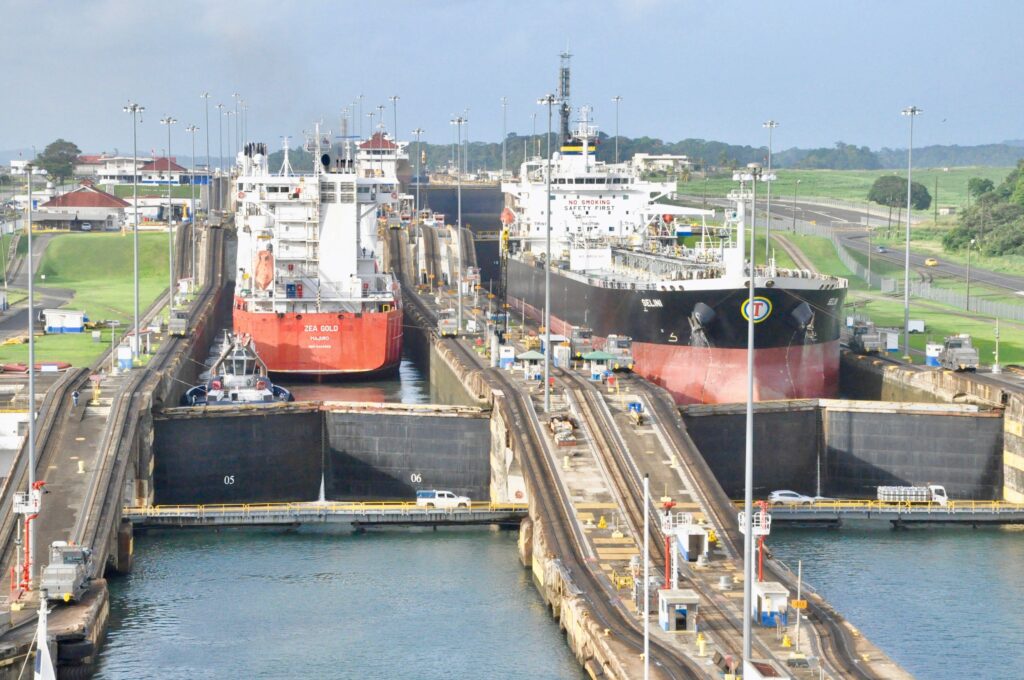Panama Canal problems show the costs of extreme weather
The Panama Canal problem is crucial to trade between Asia and the US East Coast. This summer’s drought in Panama could be more severe than in previous years as this will increase costs and safety for shipping companies and cost the global economy.
Panama Canal encounters problems
The Panama Canal is one of the world’s greatest engineering feats. The canal sees about 14,000 transits per year with about 270 million tons of cargo. The Asian-American East Coast is the busiest shipping trade route in the world, and the existence of the Panama Canal saves ships up to 8,000 nautical miles by allowing them to pass through the Americas instead of around the southern tip of South America.
The canal is fed by rainwater, which is drawn from Panama’s Gatun Lake. But recently, water levels at the lake have been extremely low due to drought. Generally, the lake experiences seasonal water levels, but on average the lowest levels are experienced in May, with more rainfall causing levels to rise again in June and July. But as we approach the months of June and July, the lake’s water levels are predicted to drop instead of rise.
Volatility is becoming more common
This type of disruption has been experienced before. During El Niño events, there is generally lower rainfall in Panama – especially on the Pacific side where Gatun is located. In contrast, during La Niña, rainfall tends to be above average and flooding often occurs.
According to climate scientists, there is now a 90 percent chance of an El Niño event in 2023, which means limited water levels in the Panama Canal. And even without El Niño, it seems that we have entered a period of extreme weather volatility exacerbated by climate change, which will lead to huge disruptions in global trade.
Freight companies caught in the crossfire
Ships passing through the canal already pay tolls and increased insurance premiums due to a higher risk of piracy. Carriers pass this charge on to customers in the form of a Panama Canal Charge (PCC). As of June 1, CMA CGM’s PCC will be USD 300 per container, while Maersk is introducing a tier system based on container sizes and cargoes.
These fees rise based on the fees charged by the Panama Canal Authority and will rise as water levels drop.
Not only this, but maximum draught limits are imposed by the canal due to the low water levels, meaning ships will have to sail with less cargo.
This has obvious economic consequences for shipping companies and their customers. Already in 2022, the efficiency of ships passing through the canal dropped. While in 2021 the average number of tons per transit was just over 21,500, in 2022 it dropped to less than 20,500 tons.
This means that shipping companies took more trips with less cargo. Given the constraints and looming weather events, this trend seems likely to continue.
US ports on the East Coast could suffer
One of the main consequences of the canal’s water level problems is a redistribution of trade from the west coast of the US to the east coast. China remains the United States’ largest trading partner and for the major port on the East Coast (New York-New Jersey) and the major port on the West Coast (Los Angeles) the majority of imports come from Asia.
In March, trade at the Port of Los Angeles fell by almost 25 percent from the same month in 2022. For about a year now, the port has been disrupted by a major labor dispute, and some shippers have chosen to divert loads from the port as a result.
However, there are signs that the problems can be solved. According to news reports, a ‘preliminary agreement’ may have been reached. US West Coast ports can therefore be a good alternative for Asian shippers who have problems crossing the channel to reach the East Coast.
About the Viking
With Viking’s signals, you have a good chance of finding the winners and selling in time. There are many securities. With Viking’s autopilots, price data, tables and stock prices, you can sort out the most interesting ETFs, shares, options, warrants, funds, etc.
Click here to see what Vikingen offers: Detailed comparison – Stock market program for those who want to become even richer (vikingen.se)













